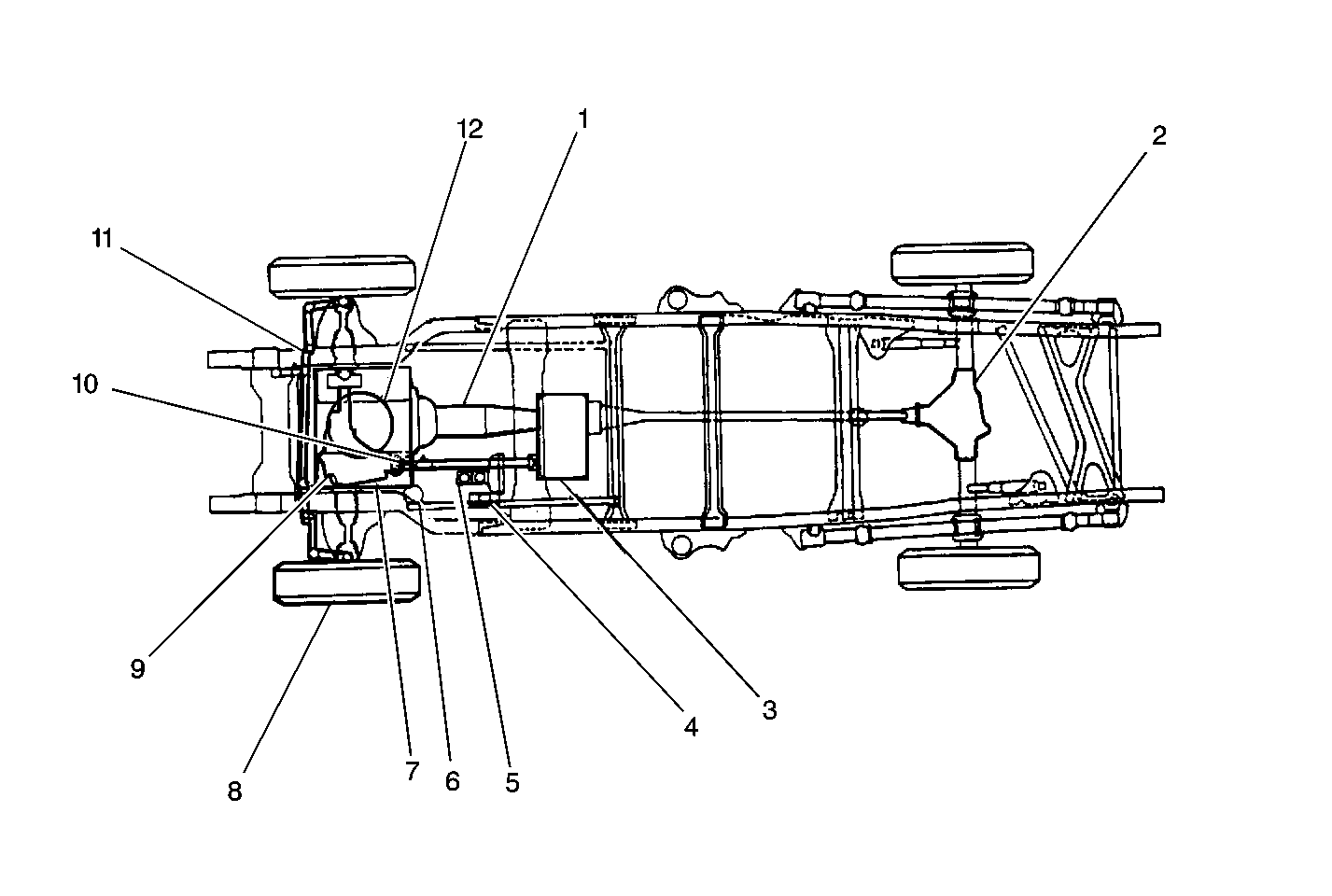The following text and illustrations describe the details of the required scheduled maintenance services.
Engine Oil and Filter Change
For the engine oil and filter changing procedure, refer to the appropriate procedure:
| • | Engine Oil and Oil Filter Replacement in Engine Mechanical |
| • | Engine Oil and Oil Filter Replacement in Engine Mechanical |
| • | Engine Oil and Oil Filter Replacement in Engine Mechanical |
Gasoline Engine Oil Quality, United States and Canada
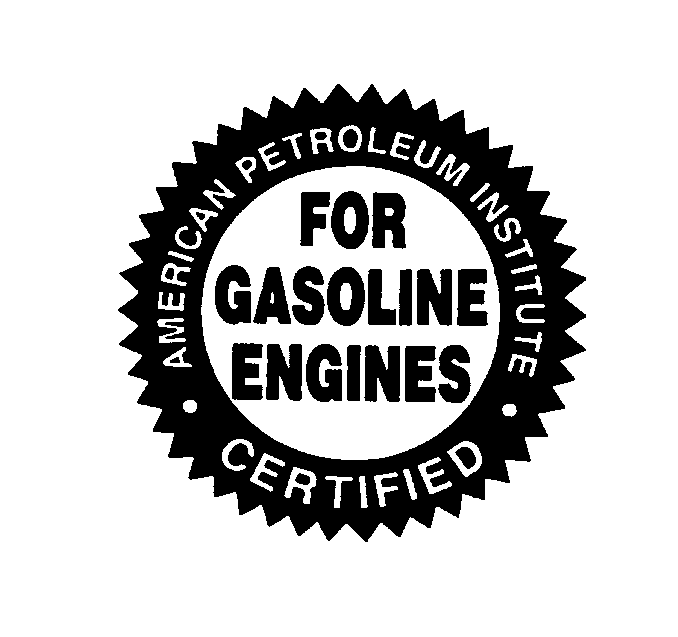
Important: When adding to, or changing the engine oil, use ONLY oils of the proper quality.
Oils of the proper quality for the vehicle can be identified by looking for the STARBURST symbol. The STARBURST symbol indicates that the oil has been certified by the American Petroleum Institute (API) and is preferred for use in gasoline engines.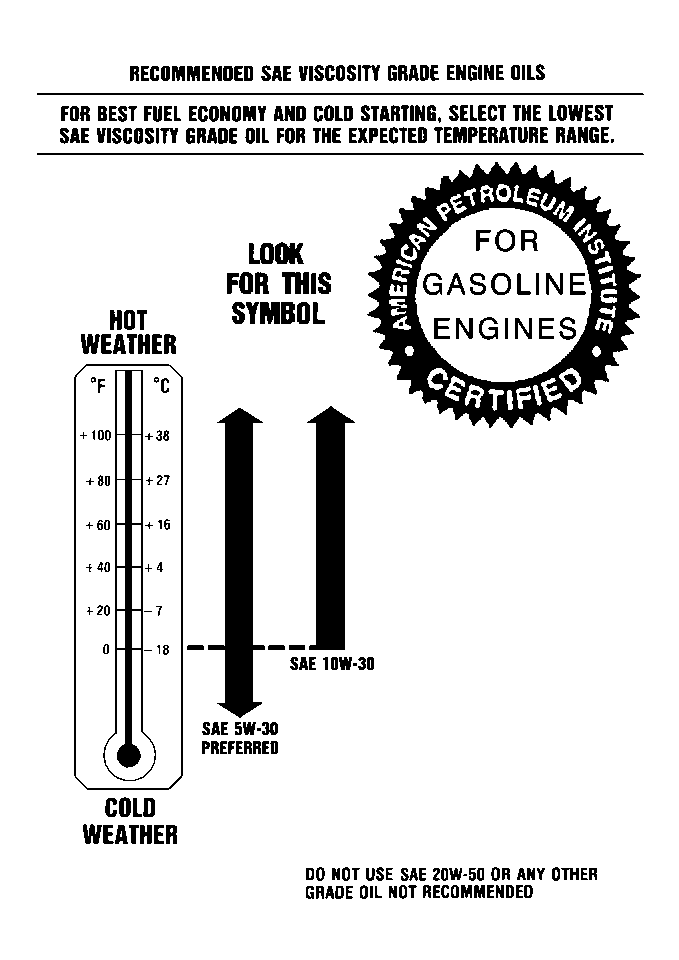
Gasoline Engine Oil Viscosity, United States and Canada
Notice: Using oils of any viscosity other than those recommended could result in engine damage. When choosing an oil, consider the range of temperatures the vehicle will be operated in before the next oil change. Then, select the recommended oil viscosity.
The recommended oil viscosity for C/K Truck gasoline engines is SAE 5W-30 for use in a full range of normal driving conditions. Engine oil viscosity (thickness) has an effect on the fuel economy and the cold-weather operation (starting and oil flow). Lower viscosity engine oils can provide better fuel economy and cold-weather performance. However, higher temperature weather conditions require higher viscosity engine oils for satisfactory lubrication. When the temperature is consistently above -18°C (0°F), SAE 10W-30 can be used for gasoline engines. SAE 20W-50 or oils of other viscosity rating or quality designations are NOT recommended for use in any truck, at any time.
Gasoline Engine Oil Quality and Viscosity, Other Than The United States and Canada

Notice: Using oils of any viscosity other than those recommended could result in engine damage. When choosing an oil, consider the range of temperatures the vehicle will be operated in before the next oil change. Then, select the recommended oil viscosity.
Important: When adding to, or changing the engine oil, use ONLY oils of the proper quality. In countries other than the United States and Canada, it may be difficult to find engine oils that display the API STARBURST symbol certifying the oil is for use in gasoline engines. If you are unable to find engine oils displaying the API STARBURST symbol, use engine oils that meet API Service SJ and/or ACEA A1-96, ACEA A2-96, or ACEA A3-96 requirements as shown in the chart above.
Diesel Engine Oil Quality, United States and Canada
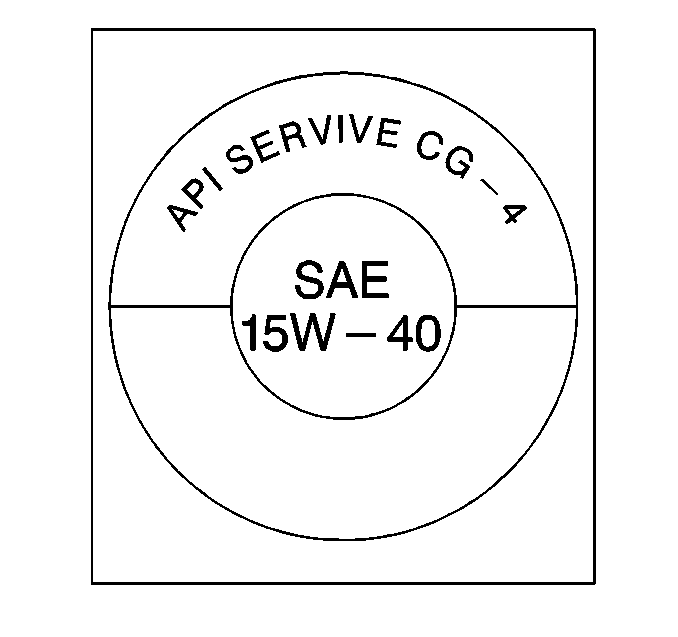
Important: When adding to, or changing engine oil, use oils of the proper quality.
Oils of the proper quality for the vehicle can be identified by looking for the DONUT symbol. The DONUT symbol indicates that the oil has been certified by the American Petroleum Institute (API), and is preferred for use in diesel engines.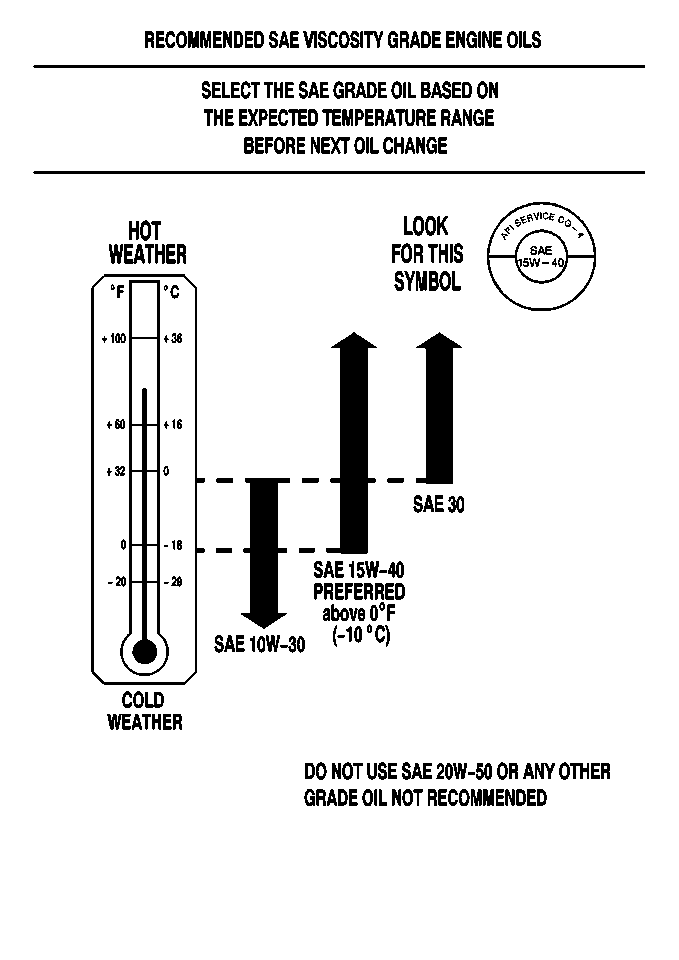
Diesel Engine Oil Viscosity, United States and Canada
Notice: Using oils of any viscosity other than those recommended could result in engine damage. When choosing an oil, consider the range of temperatures the vehicle will be operated in before the next oil change. Then, select the recommended oil viscosity.
The recommended oil viscosity for C/K Truck diesel engines is SAE 15W-40 for use in a broad range of driving conditions above -18° C (0° F). Engine oil viscosity (thickness) has an effect on the fuel economy and the cold-weather operation (starting and oil flow). Lower viscosity engine oils can provide better fuel economy and cold-weather performance. However, higher temperature weather conditions require higher viscosity engine oils for satisfactory lubrication. SAE 30 can be used for temperatures above 0°C (32°F) , and SAE 10W-30 for temperatures below 0°C (32°F). SAE 20W-50 or oils of other viscosity ratings or quality designations are NOT recommended for use in any truck, at any time.
Diesel Engine Oil Quality and Viscosity, Other Than The United States and Canada
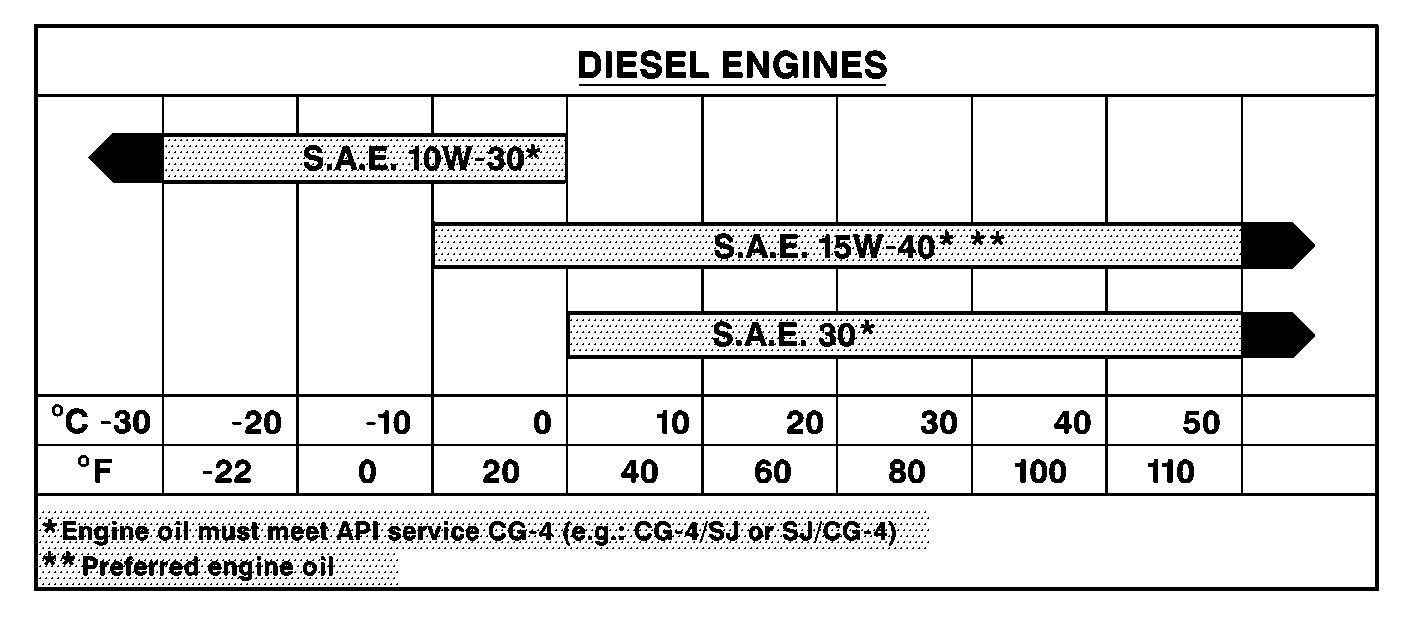
Notice: Using oils of any viscosity other than those recommended could result in engine damage. When choosing an oil, consider the range of temperatures the vehicle will be operated in before the next oil change. Then, select the recommended oil viscosity.
Engine oil viscosity (thickness) has an effect on the fuel economy and the cold-weather operation (starting and oil flow). Lower viscosity engine oils can provide better fuel economy and cold-weather performance. However, in many regions of the world with higher air temperatures, only higher viscosity engine oils are available. When choosing an engine oil viscosity consider the air temperature range the vehicle is operating in before the next oil change. Diesel engine oil viscosities meeting API Service CG-4, CG-4/SJ or SJ/CG-4 requirements may be used as shown in the diesel engine chart.
Chassis Lubrication
Notice: Do not lubricate the parking brake cables. Lubrication destroys the plastic coating on the cable.
The illustration will show the location of the lubrication points for the chassis. Lubricate transmission shift linkage. Lubricate the park brake guides, underbody contact points and linkage.
Lubrication Points (Automatic/Selectable Four-Wheel Drive)
